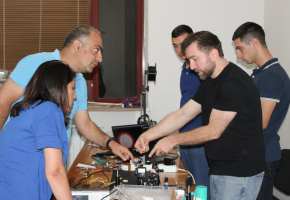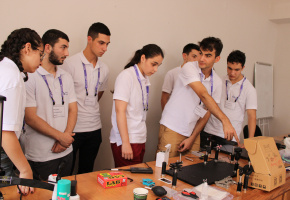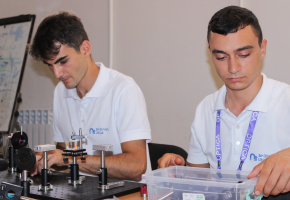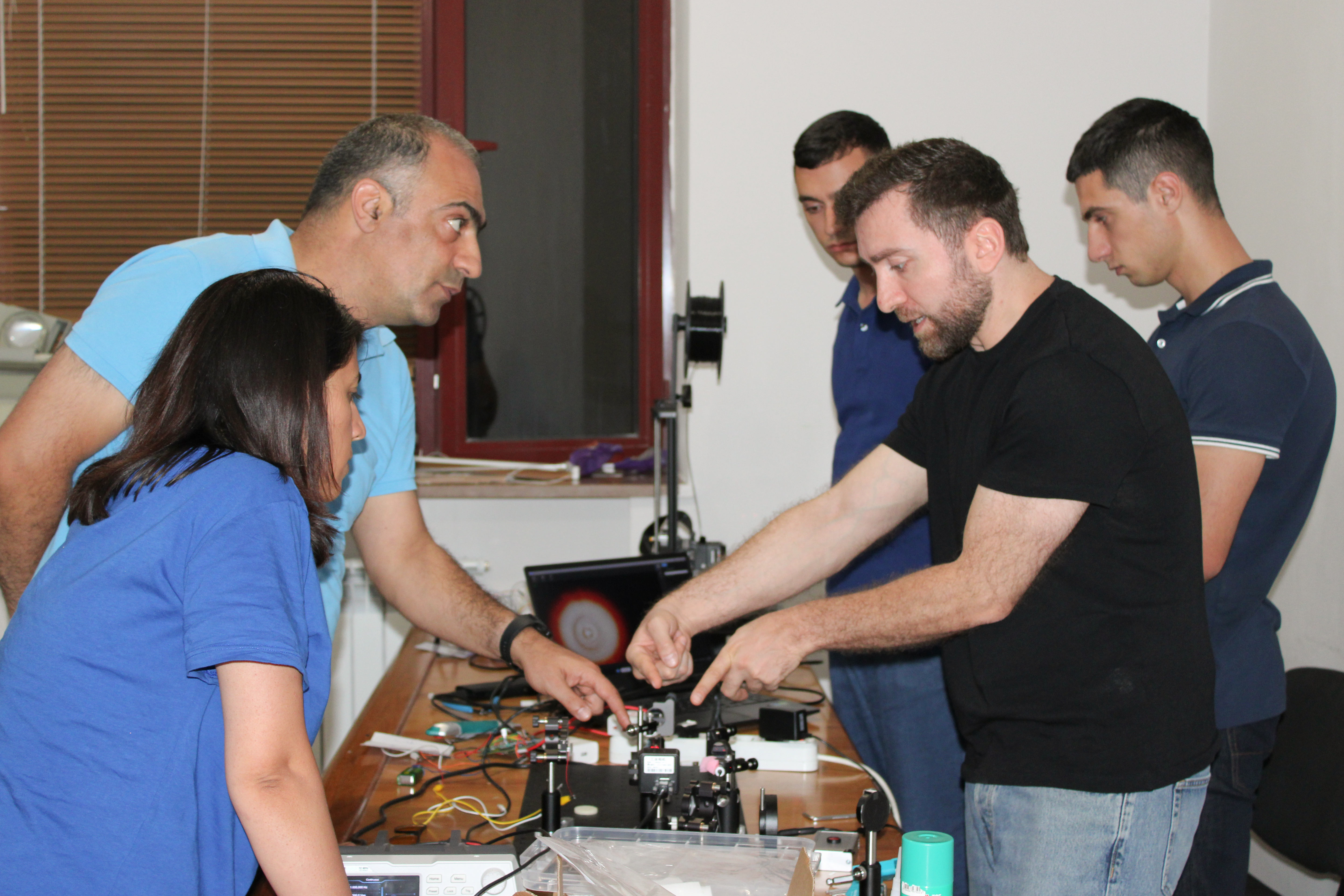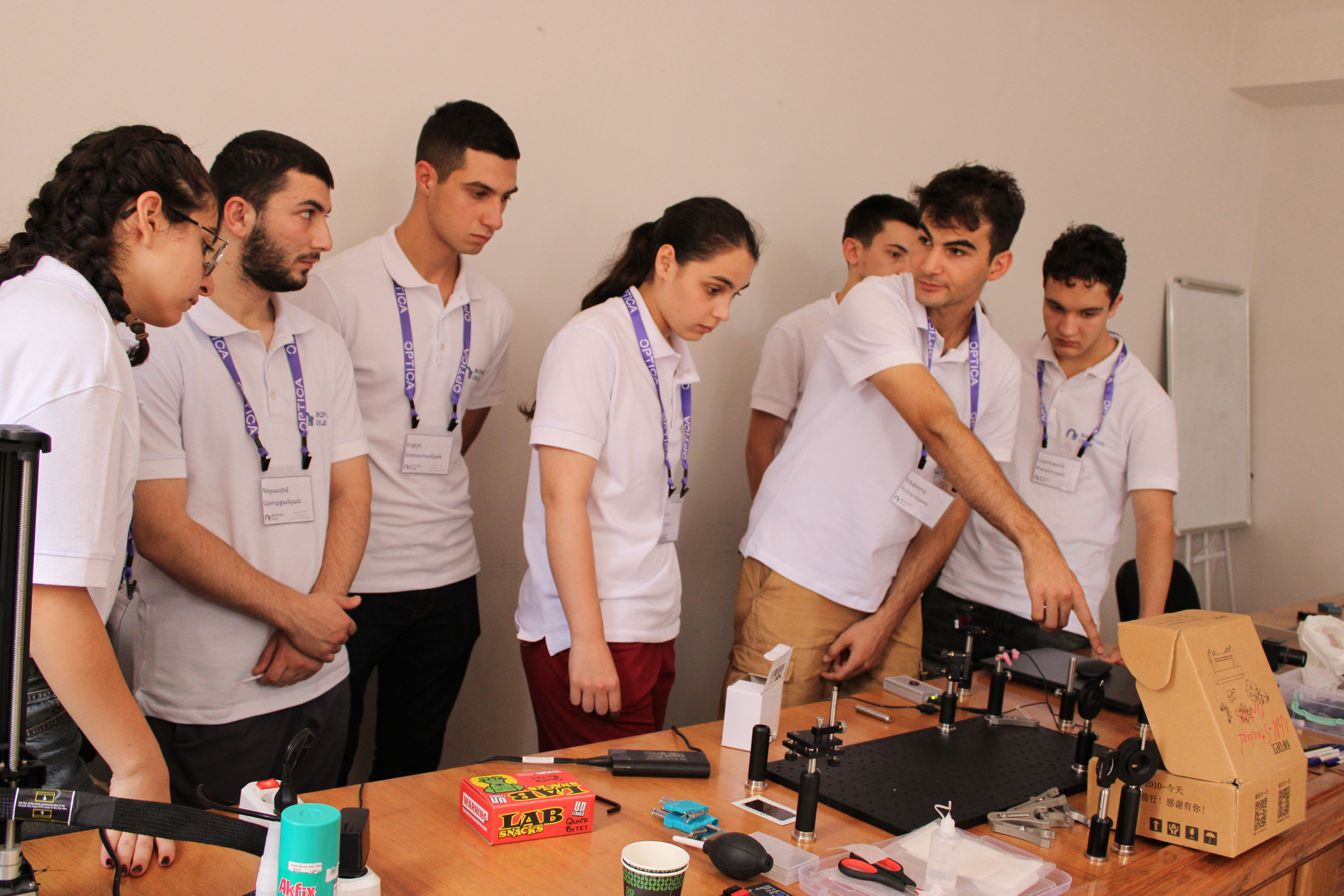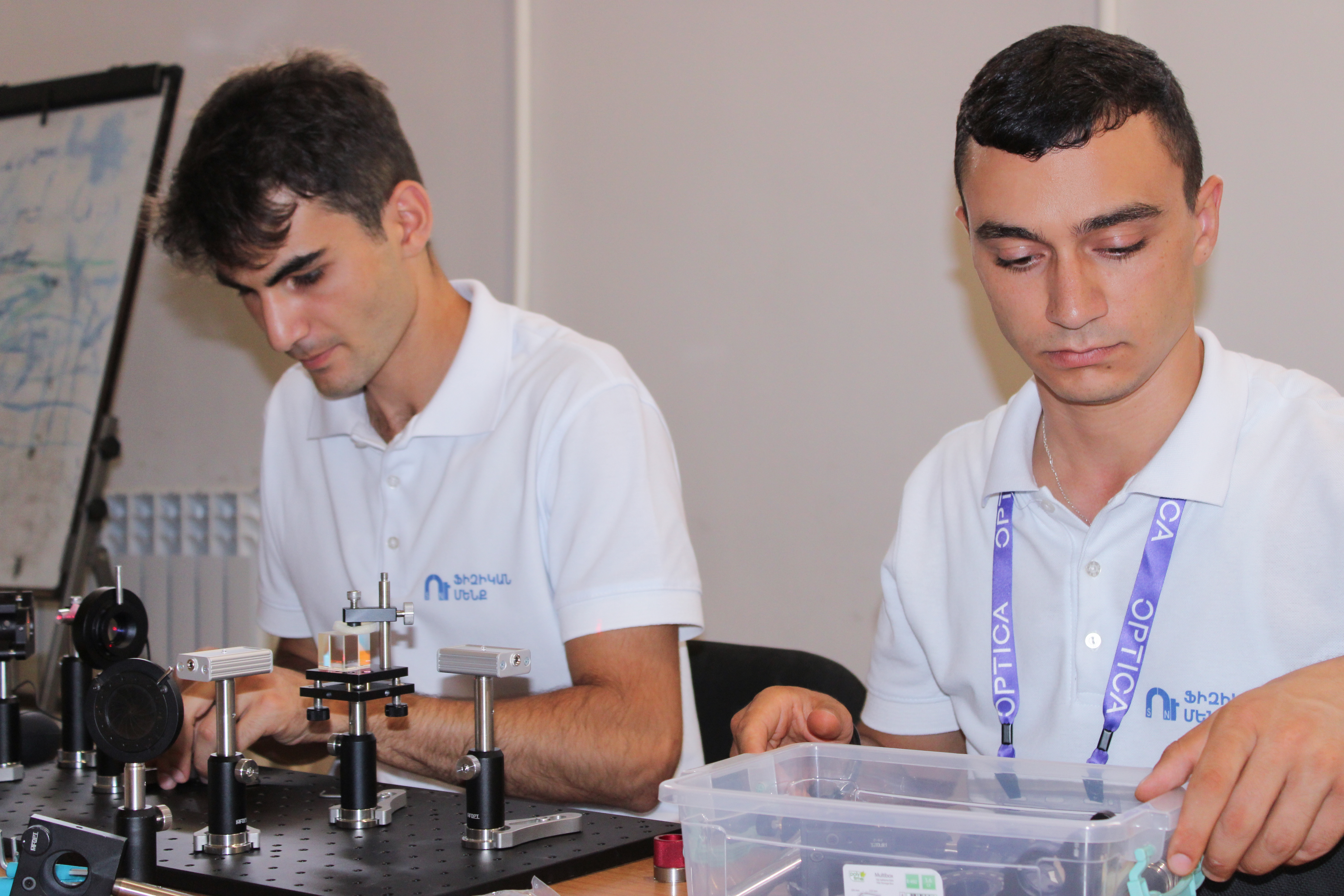October 29, 2025 | 12:52
Career
Education
Competitions
YSU Institute of Physics team launches student initiative
Within the framework of the "Education and Career" student initiatives competition organized by YSU Alumni and Career Center, the team from YSU Institute of Physics was awarded funding. The competition aims to foster the development of professional and innovative ideas. Accordingly, the institute's team developed a set of experimental physics devices designed for school students.
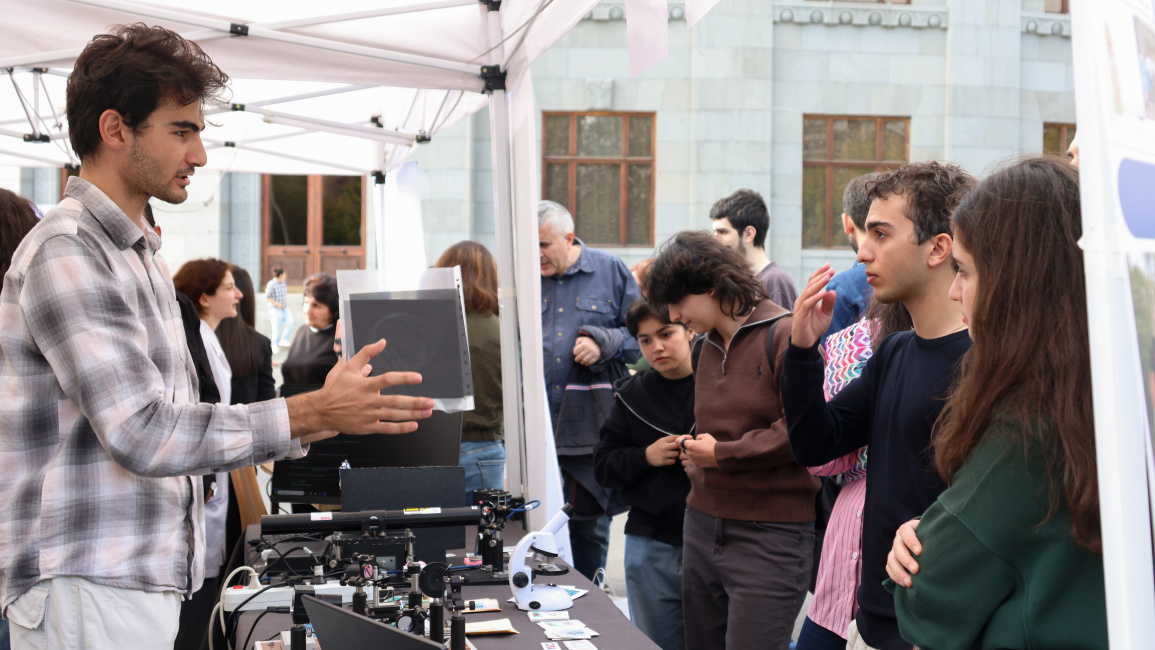
We spoke with team member Edvard Grigoryan about the "Education and Career" student initiatives competition, the project's goals, and the overall process.
– Edvard, why did you decide to take part in the "Education and Career" student initiatives competition? Was it easy to form a team and carry out a joint project?
– Our team, which was formed on the basis of YSU Institute of Physics student branch of the international optics organization Optica—YSO Student Chapter—aims to make physics more accessible to school students. We viewed participation in the competition as an opportunity to turn our idea into a practical project. Forming a team was not difficult, as the members—Tatevik Brsoyan, Mari Hayrapetyan, Eduard Karapetyan, and Levon Davtyan—actively participated in numerous scientific demonstrations and possess the necessary skills to organize experiments. Each team member has a specific role: some are responsible for designing the devices, others for developing the educational methodology of the experiments and preparing a manual, which will serve as the outcome of our work. During the process, new members also joined us from the student organization.
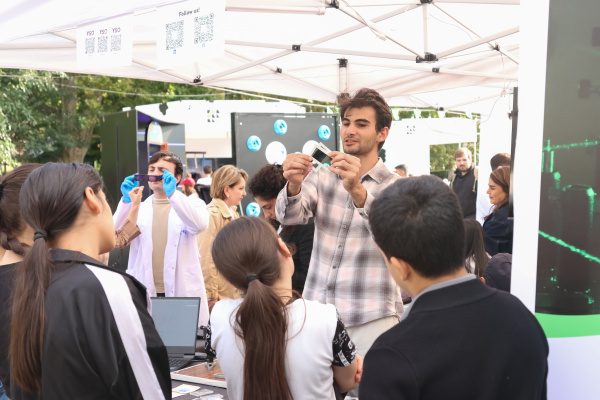
– Could you please explain what issues the "Set of Experimental Physics Devices for School Students" project addresses?
– Our goal is to enrich the current educational program by creating a more engaging, practical, and motivating learning environment. I believe that one of the reasons for the decline in students' interest in physics is the lack of hands-on experiments in schools. Our initiative seeks to bridge that gap by giving students the opportunity to conduct physics experiments themselves and turn theoretical knowledge into practical experience.
Suppose this set of devices is successfully used in schools and meets our expectations. In that case, we plan to develop another kit in the next stages, based on the thematic priorities of YSU educational programs—in the fields of mechanics, thermodynamics, and molecular physics. In this way, the project will become a continuous initiative that encourages students' interest in science and physics beyond the limitations of textbooks.
– What steps are you planning to take to address the challenges you mentioned?
– Based on preliminary research and pilot work, we selected the Michelson interferometer as the core of our initiative. This system not only enables various experiments related to the wave properties of light but also has practical applications, as it allows the detection of environmental changes and mechanical vibrations.
During the project, we plan to visit different schools to present and demonstrate the set of devices in practice. During these visits, we will conduct observations and collect statistical data on the effectiveness of the experiments, student engagement, and teacher feedback. The results and feedback will help us make necessary improvements and refine our kit.
– Considering the thematic priorities of the project, what outcomes are expected during and after its implementation?
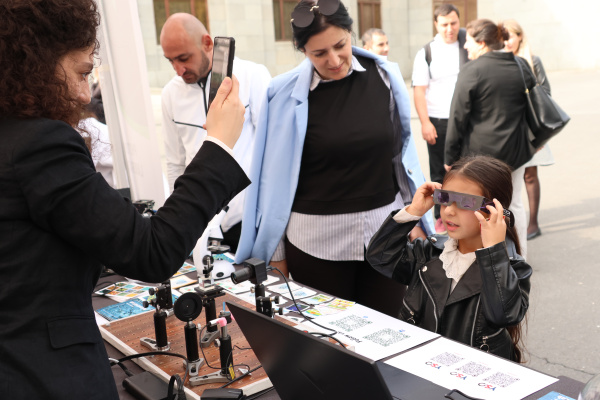
– The project is currently in progress. The experimental kit was constructed and successfully tested during the Physics and Us summer camp (August 5–9) with more than 40 participants. During the camp, students had the opportunity to build the interferometer system with their own hands and conduct experiments on light interference and environmental vibrations. The experiments were also demonstrated to approximately 50 students during visits to Schools №5 and №6 in Sevan. The kit was presented at the "Learn & Work: YSU EXPO-2025" event and as part of Science Week Armenia.
Another expected outcome of the project is an educational manual, the preparation of which is currently underway.
More than 300 people have already become acquainted with our project, about 100 of whom have been direct participants in the experiments. Both students and teachers have responded positively, noting that such practical experiments greatly stimulate interest and help students better understand textbook material.
These responses indicate that the project successfully fulfills its main goal—fostering interest in physics and turning the learning process into an experimental and dynamic experience.
– Please describe the challenges you faced while developing the project within the given timeframe and criteria. What kind of support did you receive and from whom?
– During the organizational and implementation stages, we faced several main challenges—lack of workspace, time constraints, and issues related to obtaining technical materials. These were resolved with the help of YSU resources and mentor support. For example, YSU Photonics & AI Lab provided the necessary materials and equipment for the preliminary preparation of the kit, while the Institute of Physics provided workspace for the project's implementation. Our mentors, Astghik and Tatevik Chalyan, guided us throughout all stages of the project, providing both scientific and organizational support.
According to Edvard Grigoryan, within the framework of the project, the team of the Institute of Physics plans to visit YSU STEM High School, followed by two high schools in the Ararat Province, continuing the demonstration of experiments.
